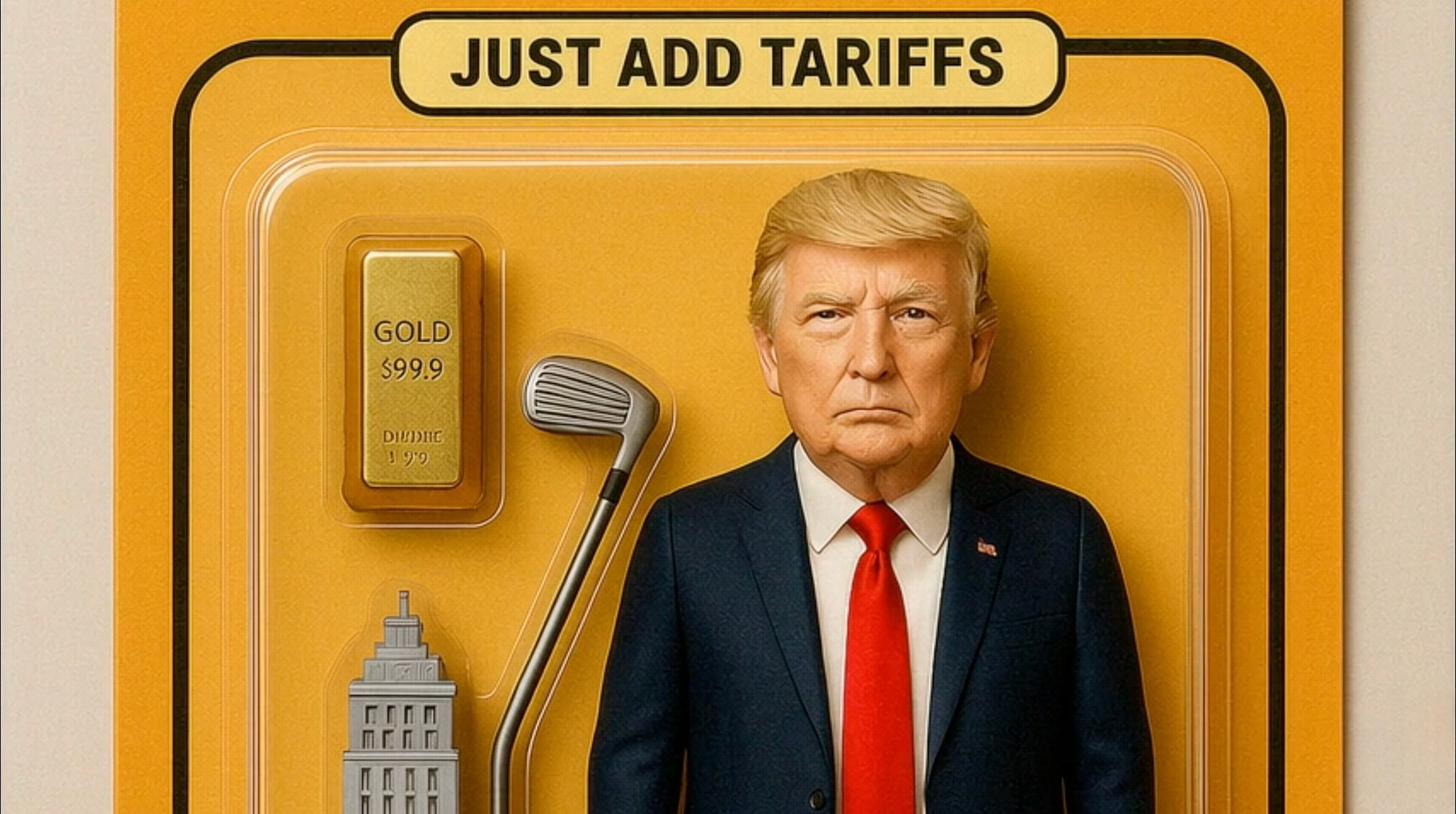Impact of Trump’s Tariff Announcement on Global Markets: What Does It Mean for Your Investments?
The financial world has been shaken to its core following President Donald Trump's announcement of sweeping tariffs that have triggered massive sell-offs across global stock markets. On April 2, 2025, Trump revealed a 10% baseline tariff on most U.S. imports, alongside higher rates for specific countries such as China (34%), South Korea (25%), and the European Union (20%). This unprecedented move sent shockwaves through the market, with investors grappling with the possibility of an all-out global trade war and the potential economic repercussions. But what does this mean for U.S. stocks, the global economy, and your portfolio?
Tariffs Spark a Global Market Sell-Off: S&P 500, Dow Jones, and Nasdaq Fall Sharply
The market reacted swiftly to Trump's tariff announcement, with the S&P 500 shedding 4.8%, marking its worst day since the pandemic-induced sell-off in 2020. The Dow Jones Industrial Average plunged by 1,679 points, or 4%, while the Nasdaq Composite tumbled by 6%. The sell-off wasn’t limited to just U.S. stocks; global markets followed suit. The STOXX 600 index, a key European benchmark, saw its largest daily loss since 2020, dropping by 5.1%. The Nasdaq, deeply impacted by tech stocks, fell into bear market territory after a more than 20% drop from its recent highs, signaling a significant loss of confidence in the sector.
The U.S. Dollar Faces Pressure Amid Tariff Fears
Despite the general expectation that tariffs would strengthen the U.S. dollar by reducing the country's trade imbalance, the opposite has occurred. The U.S. dollar weakened following Trump's announcement, largely due to concerns about the long-term effects of a trade war on global economic growth. Investors who were initially optimistic about the tariffs causing the dollar to surge are now second-guessing their positions, worried about the potential rise in inflation and the Fed’s limited ability to combat it with monetary policy.
The DXY, which tracks the dollar's value against a basket of currencies, fell to its lowest level in months, reaching near 101.30, marking a significant decline. This depreciation could exacerbate inflation in the U.S., especially as import prices rise due to higher tariffs, putting more strain on consumers.
China Responds with Retaliatory Measures: A Possible Escalation of Trade War
The situation escalated further on April 3, when China announced it would impose reciprocal 34% tariffs on U.S. goods, effective April 10. The Chinese response to Trump’s tariffs was far more aggressive than previous measures, including targeted tariffs on U.S. agricultural products and industrial goods. The announcement exacerbated fears that the world’s two largest economies are on the brink of a full-blown trade war, which could derail global trade, increase inflationary pressures, and slow down growth across major economies.
China’s retaliatory tariffs are a direct challenge to Trump’s trade policies and have caused widespread uncertainty in the market. The move has impacted key sectors such as technology, energy, and finance, with major companies like Apple (AAPL), Nvidia (NVDA), and Amazon (AMZN) seeing sharp declines. Even the energy sector wasn’t spared, with oil prices plummeting as global economic growth prospects dimmed.
The U.S. Economy Faces a Conundrum: Inflation and Slowing Growth
As tariffs raise costs for businesses and consumers alike, inflation is expected to rise in the U.S. At the same time, slowing growth, driven by decreased demand for imported goods and retaliatory measures from other countries, could lead to a stagflation scenario—a situation where the economy stagnates while inflation continues to rise. Federal Reserve Chairman Jerome Powell has acknowledged that Trump’s tariffs are larger than expected and warned that the resulting higher prices and slower growth may challenge the Fed's ability to manage inflation.
The Fed is now facing a difficult balancing act. While the central bank has the ability to cut interest rates to stimulate growth, a rise in inflation may prevent it from doing so. This leaves the Fed with fewer tools to manage the economic fallout from the trade war. Market participants are already pricing in a higher chance of a rate cut by June, but the tariff-induced inflationary pressures could complicate any such moves.
The Effects on Global Trade and Supply Chains: Who Wins and Who Loses?
Trump’s tariffs are likely to have a significant impact on global trade and supply chains, especially for companies reliant on imports and exports. While the tariffs are designed to encourage U.S. companies to relocate their supply chains back to the U.S., this could lead to higher costs and reduced competitiveness. Companies with significant exposure to China, such as Apple, Nvidia, and Tesla, are already feeling the strain, as evidenced by their sharp stock declines in recent days.
On the flip side, countries that are not directly targeted by the U.S. tariffs, such as Vietnam and Cambodia, may see some benefits as companies reroute their supply chains to avoid U.S. tariffs. However, even these countries will be impacted by global economic slowdowns, as the ripple effect of reduced demand from the U.S. will inevitably affect their economies.
Global Recession Fears Mount: Is This Just the Beginning?
The ongoing trade war between the U.S. and China, exacerbated by Trump’s tariff announcement, has raised fears of a global recession. Analysts at Oxford Economics predict that global GDP growth could fall below 2% in 2025, the weakest rate since the 2008 financial crisis. If the situation escalates further, it could lead to a protracted period of low growth, high inflation, and economic uncertainty, which would significantly impact both developed and emerging markets.
The S&P 500 has already lost over $4 trillion in market value, setting a record for the fastest two-day decline in history. The impact of this economic downturn is not just limited to the stock market; it is also affecting pensions, investment funds, and consumer confidence. As markets react to the new reality of higher tariffs and slower global growth, investors are grappling with how to adjust their portfolios.
What Lies Ahead for Markets and Investors?
As the trade war intensifies and global markets continue to react, it remains to be seen whether the U.S. stock market will recover or continue to decline. In the short term, volatility is likely to persist, as the markets digest the potential impact of Trump’s tariffs and China’s retaliatory measures. For long-term investors, the key question remains: will this trade war result in a recession, or will the global economy adjust and find a new equilibrium?
In conclusion, the latest developments surrounding Trump’s tariffs and the escalating trade war have already sent shockwaves through global markets. As stock indices like the S&P 500, Dow Jones, and Nasdaq experience sharp declines, concerns about inflation, recession, and slowing growth are weighing heavily on investors’ minds. The true long-term impact of these tariffs remains uncertain, but one thing is clear: the road ahead for the global economy is fraught with challenges, and investors must prepare for continued volatility in the markets.



















